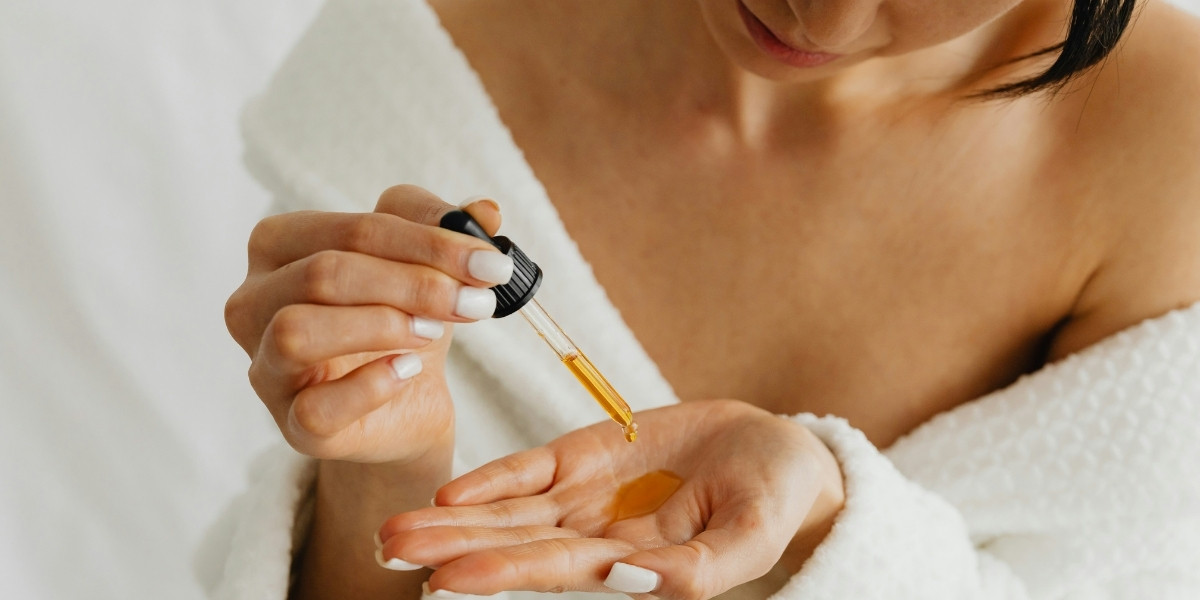Unlock Clear Skin: The Power of Salicylic Acid in Skincare
The quest for clear, blemish-free skin is a common journey for many, often leading to a complex array of skincare ingredients and routines. Among the most revered and effective components in this pursuit is Salicylic Acid. Far from being a fleeting trend, this powerhouse ingredient has stood the test of time, consistently proving its efficacy in addressing a wide range of skin concerns, particularly those related to acne, excess oil, and clogged pores. Its unique properties allow it to delve deeper into the skin’s architecture, making it an indispensable tool for achieving a visibly healthier and clearer complexion.
Read Also: Benefits of Antioxidants for Skin Health: What You Should Know
The true magic of Salicylic Acid lies in its specific chemical structure, which grants it unparalleled abilities in skin exfoliation and purification. Understanding how this ingredient interacts with the skin at a molecular level reveals why it is so widely recommended by dermatologists and found in countless effective skincare formulations. It is not merely an abrasive, but a sophisticated agent that gently yet effectively unplugs pores and reduces inflammation, paving the way for a smoother, more radiant appearance. Embracing the power of Salicylic Acid can indeed be the key to unlocking the clear skin many aspire to achieve.
What exactly is Salicylic Acid and how does it work on skin?
Salicylic Acid is a beta-hydroxy acid (BHA), a class of chemical exfoliants distinct from the more commonly known alpha-hydroxy acids (AHAs). Its defining characteristic, and what makes it particularly effective for specific skin concerns, is its oil-soluble nature. This unique property allows Salicylic Acid to penetrate oily skin and go deep into the pores, which are often clogged with sebum, dead skin cells, and debris. Unlike water-soluble AHAs that primarily work on the surface of the skin, BHAs can cut through oil, making them exceptionally potent for oilier and acne-prone complexions.
Once inside the pore, Salicylic Acid works to dissolve the “glue” that holds dead skin cells together. It acts as a desmolytic agent, loosening the bonds between these cells and promoting their shedding from within the pore lining. This action effectively unclogs pores, preventing the formation of blackheads and whiteheads, which are essentially pores blocked by oxidized sebum and dead skin. By keeping the pores clear, it not only treats existing breakouts but also plays a crucial role in preventing future ones, creating a less hospitable environment for acne-causing bacteria.

Photo Credit: Unsplash.com
Beyond its exfoliating capabilities, Salicylic Acid also possesses anti-inflammatory properties. This dual action is particularly beneficial for inflamed acne lesions, such as pustules and papules, as it helps to reduce redness and swelling. Its ability to calm irritation while simultaneously purifying pores makes it a comprehensive solution for managing breakout-prone skin. This combination of exfoliation, pore cleansing, and anti-inflammatory benefits is what truly sets Salicylic Acid apart in the world of skincare.
Which skin concerns benefit most from Salicylic Acid?
While beneficial for various skin types, certain skin concerns benefit most dramatically from the targeted action of Salicylic Acid. Foremost among these is acne, particularly mild to moderate inflammatory acne, as well as non-inflammatory lesions like blackheads and whiteheads. Its unique ability to penetrate oil-filled pores directly addresses the root cause of these blemishes by dissolving the plugs of sebum and dead skin cells that lead to breakouts. Regular use can significantly reduce the frequency and severity of acne flare-ups.
Individuals with oily skin also find immense value in Salicylic Acid. Its oil-soluble nature allows it to work effectively within the sebaceous glands, helping to regulate sebum production and reduce excessive oiliness on the skin’s surface. This leads to a less greasy complexion, minimized shine, and a reduced likelihood of pores becoming clogged in the first place. By controlling oil, it creates a healthier environment for the skin, preventing many common issues associated with an overproduction of sebum.
Salicylic Acid is highly effective in treating and preventing blackheads and whiteheads, which are types of comedones. Blackheads are open pores clogged with oxidized sebum and dead cells, appearing dark, while whiteheads are closed pores with trapped material. Since Salicylic Acid can exfoliate inside the pore lining, it efficiently clears out these blockages, leading to visibly smoother and clearer skin texture. Its consistent use can significantly diminish the appearance of these common blemishes, providing a clearer and more refined skin surface.
How does Salicylic Acid differ from other common exfoliants?
Salicylic Acid stands apart from other common chemical exfoliants, primarily alpha-hydroxy acids (AHAs) like glycolic and lactic acid, due to its unique chemical structure and oil solubility. While both BHAs and AHAs exfoliate the skin by loosening dead skin cells, their mechanisms and penetration depths differ significantly. AHAs are water-soluble, meaning they primarily work on the skin’s surface, exfoliating the outer layer of dead skin cells. This makes AHAs excellent for improving skin texture, reducing hyperpigmentation, and enhancing overall radiance, but they do not penetrate oil as effectively as BHAs.
The key differentiator for Salicylic Acid is its lipophilic (oil-loving) nature. This property allows it to seamlessly mix with the skin’s natural oils and penetrate deep into the pores, reaching the sebaceous glands where acne often originates. This deep-cleansing ability makes it superior to AHAs when it comes to unclogging pores and treating oil-related skin concerns. While AHAs excel at surface exfoliation and addressing issues like fine lines and sun damage, Salicylic Acid targets the internal environment of the pore, directly addressing the conditions that lead to acne.
Salicylic Acid possesses inherent anti-inflammatory properties, a characteristic less prominent in most AHAs. This anti-inflammatory action makes it particularly beneficial for reducing the redness and swelling associated with inflamed acne lesions. This dual capacity to exfoliate within the pore and calm inflammation positions Salicylic Acid as a uniquely powerful ingredient for acne-prone and oily skin, providing a targeted treatment that other common exfoliants cannot fully replicate.
What are the best ways to incorporate Salicylic Acid into a skincare routine?
Incorporating Salicylic Acid into a daily skincare routine can be highly effective for achieving clear skin, and it is available in various formulations designed for different needs and concentrations. For general acne prevention and oil control, a cleanser containing 0.5% to 2% Salicylic Acid is an excellent starting point. Used daily or every other day, these cleansers help to gently exfoliate and purify pores without excessive dryness, making them suitable for consistent maintenance.
For more targeted treatment or deeper exfoliation, toners, serums, or lotions with Salicylic Acid are often recommended. Toners, typically used after cleansing, prepare the skin for subsequent treatments and deliver a light layer of exfoliation. Serums and lotions, which usually contain higher concentrations (often 2%), provide a more potent dose of the ingredient, allowing it to work more intensively on clogged pores and active breakouts. These can be applied to the entire affected area or used as a spot treatment for individual blemishes.

Photo Credit: Unsplash.com
When beginning with Salicylic Acid, it is advisable to start with lower concentrations and gradually increase frequency or strength as your skin adapts. Applying it every other day initially can help assess your skin’s tolerance. Always remember to follow up with a non-comedogenic moisturizer, as even oil-soluble exfoliants can cause some dryness. Crucially, due to its exfoliating action, Salicylic Acid can increase sun sensitivity, making daily application of a broad-spectrum sunscreen an absolutely essential step in any routine incorporating this powerful ingredient.
What are the potential side effects and considerations when using Salicylic Acid?
While Salicylic Acid is highly effective, it is important to be aware of potential side effects and considerations to ensure safe and beneficial use. The most common side effects are dryness, peeling, and mild irritation, particularly when first introducing the ingredient or using higher concentrations. This can manifest as redness, flakiness, or a feeling of tightness. Starting with lower concentrations (e.g., 0.5% or 1%) and applying it every other day can help the skin acclimatize and minimize these initial reactions.
Individuals with sensitive skin, or those prone to eczema or rosacea, should exercise particular caution when using Salicylic Acid. Its exfoliating properties, while beneficial for acne, can sometimes exacerbate dryness or redness in already compromised skin barriers. A patch test on a small, inconspicuous area of skin before full application is always recommended to check for adverse reactions. If severe redness, burning, or itching occurs, discontinue use and consult a dermatologist.
Read Also: How Skin Resurfacing Can Transform Your Skin Texture
A significant consideration is sun sensitivity. As an exfoliant, Salicylic Acid removes dead skin cells that offer some natural protection from UV radiation, making the skin more vulnerable to sunburn. Therefore, daily and diligent application of a broad-spectrum sunscreen with an SPF of 30 or higher is absolutely non-negotiable when incorporating Salicylic Acid into your routine, even on cloudy days or when spending limited time outdoors. Additionally, pregnant or breastfeeding individuals should consult their doctor before using products containing Salicylic Acid, especially in higher concentrations, as its safety in these contexts requires professional guidance.







